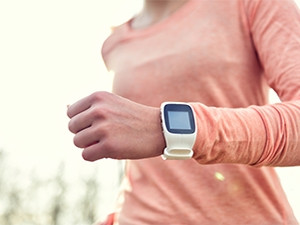
Wearable devices will play a large role in the healthcare industry delivering improved healthcare services through real-time, remote patient monitoring and post-surgery rehabilitation.
That's according to a recent report by Frost & Sullivan, which points to smartwatches and fitness bands as the most popular wearable devices.
Shuba Ramkumar, Frost & Sullivan's information & communication technologies senior research analyst, says wearable devices will extend beyond fitness tracking to include two-way communication between the user and the healthcare ecosystem.
"Though a number of applications currently address the business-to-consumer market, wearable devices will eventually offer support to healthcare institutions by sharing real-time data collected by the consumer," Ramkumar notes.
The market research firm says despite advancements in battery technology, the increasing use of organic light-emitting diode screens, advanced sensors, and the complex functionality on wearable devices will intensify battery power concerns. Along with this, it adds, the possibility of inaccurate data generation can affect customer uptake.
With embedded sensors continuously collecting data and breaking down context barriers by bringing that data into common social and physical spaces, the implementation of strict privacy and security laws is crucial, the firm notes. Data regulation laws require communication between technology vendors, legal institutions, and governments to determine the future of wearable device data.
"In the long-term, energy harvesting and wireless charging technologies will reduce battery issues, helping wearables to capture the interest of consumers," Ramkumar points out.
"Assuming battery and data accuracy issues are resolved, the real value of wearable devices will accrue as part of the Internet of things ecosystem, enabling communication of data across devices."
In terms of the larger picture, Frost & Sullivan believes pursuing alternative business models will sustain customer interest in wearable devices.
Service-based models and enterprise or vertical market partnerships will be especially effective in pushing wearable technology to the mass market, it concludes.
Share